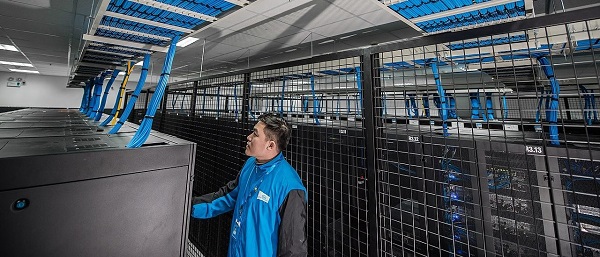2025 Federal Election
BLOCKBUSTER REPORT: Canada’s ties to Wuhan Institute of Virology and creation of COVID uncovered by Sam Cooper of The Bureau
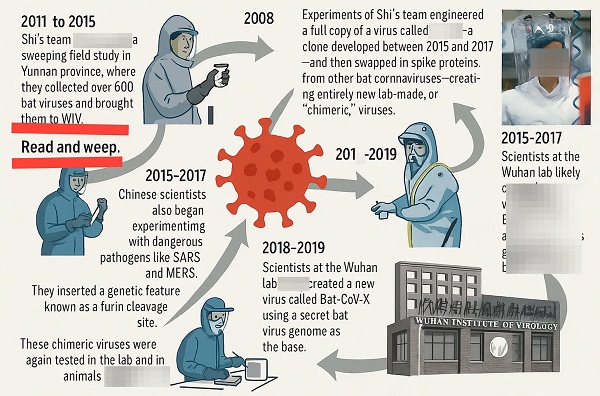
Exclusive: CSIS Told Us We Were Infected at Wuhan Games, Soldier Says—But Ottawa Kept It Quiet
 Sam Cooper
Sam Cooper
CAF member has come forward with explosive testimony that Canadian intelligence agents assessed soldiers were infected with COVID-19 at the 2019 Wuhan Games—but the findings were buried in Ottawa.
“I was in Wuhan in the fall of 2019 at the World Military Games. A significant number of the team, and I myself, contracted COVID and became very, very ill.”
With that statement, delivered in confidential testimony to The Bureau, a Canadian Armed Forces member added his voice to one of the most powerful emerging revelations in the global search for the origins of COVID-19. His account closely matches the U.S. Department of Defense’s newly declassified conclusion that seven American soldiers fell ill with COVID-like symptoms during the same October 2019 military competition in Wuhan, China.
The American military investigation was ordered by Congress in 2021 but kept from the public until a Freedom of Information Act lawsuit forced its release. Critics now say the Biden administration suppressed the findings, which suggest U.S. intelligence agencies had early evidence of a viral outbreak tied to the Games.
The Canadian soldier believes voters deserve to know that CSIS—Ottawa’s civilian intelligence agency—also assessed that Canadian military athletes were infected in Wuhan, and that the Trudeau government chose not to inform the public. “Yes, CSIS and a number of other such organizations did interview members of the contingent,” he said of his experience upon returning to Canada. “They were professional and concerned only with facts. But when completing their interviews, they let it be known that their work and report would be suppressed.”
The Bureau has independently confirmed, through multiple confidential interviews, that Canadian intelligence did in fact interview military athletes and concluded they had experienced COVID-like symptoms while in Wuhan.
“The story of U.S. athletes becoming very sick while in Wuhan, or shortly after returning, and the institutional cover-up since—it mirrors exactly what Canadian Forces athletes experienced,” the CAF member explained.
“I say cover-up because, while it would have been difficult to know at the time that we had COVID, the timeline and intelligence were well known by May [2020.] Still, neither operational commanders or CAF health officials were willing or interested to conduct a fulsome assessment of the contingent.”
His testimony now stands alongside a torrent of new disclosures—including a bombshell release from the U.S. Defense Intelligence Agency—that together appear to draw a new, starker picture of what happened in Wuhan and how it may be linked to dangerous Canadian research.
The DIA documents, made public only after a Freedom of Information Act lawsuit by US Right to Know, include a 46-slide classified briefing dated June 25, 2020. It concludes that COVID-19 is most consistent with a lab-engineered virus created at the Wuhan Institute of Virology (WIV), likely under the direction of Dr. Shi Zhengli.
“Hypothesis: In mid-2019, one of the not fully characterized Bat-CoV-X chimeric viruses escaped from the WIV facilities and began infecting civilians in the city of Wuhan,” the document says.
In chronology, the DIA report focuses on a 2008 study co-authored by Dr. Shi, which showed that bat coronaviruses could be altered to infect human cells. The study described how swapping small genetic pieces in the virus allowed it to attach to human receptors. This work laid the foundation for later experiments in Wuhan that involved creating new hybrid viruses.
From 2011 to 2015, Dr. Shi’s team conducted a sweeping field study in Yunnan province, where they collected over 600 samples from multiple bat species living in caves and forested regions. The viruses were brought back to Wuhan and stored at the Institute—forming the core of a growing coronavirus research bank.
Shi’s team engineered a full copy of a virus called WIV1—a clone developed between 2015 and 2017—and then swapped in spike proteins from other bat coronaviruses—creating entirely new lab-made, or “chimeric,” viruses. According to U.S. intelligence analysts, this was one of the key human-made modifications that allowed the virus to more effectively bind to human cells—marking a potential step toward weaponizing the bat virus.
During this same 2015–2017 window, Chinese scientists also began experimenting with dangerous pathogens like SARS and MERS. They inserted a genetic feature known as a furin cleavage site—another significant modification known to increase a virus’s ability to infect human cells. These modified viruses were tested both in lab dishes and in live animals. The experiments were conducted under BSL-2 safety conditions, which in China are less strict than in the United States. According to U.S. military intelligence, Chinese BSL-2 labs have a documented history of leaks.
In this process, between 2017 and 2019, scientists at the Wuhan lab likely created a new virus called Bat-CoV-X using a secret bat virus genome as the base, the intelligence slide says. They continued building more versions by swapping in different genetic parts—especially the pieces that help the virus bind to human cells—and adding the furin cleavage site. These chimeric viruses were again tested in the lab and in animals throughout 2018 and into 2019, just before the outbreak began.
The final readable slide in the redacted DIA document concluded: “The molecular biology capabilities of WIV and the genome assessment are consistent with the hypothesis that SARS-CoV-2 was a lab-engineered virus that was part of a bank of chimeric viruses in Zhen-Li Shi’s laboratory at WIV that escaped from containment.”
By early 2020—when athletes around the world, including Canadian and U.S. soldiers, had already returned to their home countries with COVID-19-like infections—the Wuhan Institute of Virology and other Chinese government-controlled agencies began publishing studies promoting a natural zoonotic origin for SARS-CoV-2 and deflecting scrutiny from any laboratory origin theory.
The Canadian–Chinese Lab Connection
What makes the Defense Intelligence Agency’s timeline bombshell especially troubling for Canada is how closely it aligns with The Bureau’s earlier reporting on Dr. Xiangguo Qiu. Dr. Qiu was the now-expelled head of special pathogens at Canada’s National Microbiology Laboratory in Winnipeg. Canadian intelligence documents reviewed by The Bureau confirm that Qiu had an active working relationship with Dr. Shi Zhengli, the Wuhan lab, and the People’s Liberation Army, beginning in 2017. Together, they co-led research on Ebola and synthetic bat coronaviruses—projects funded by the Chinese Academy of Sciences and supported by CanSino Biologics, a state-owned company tied to China’s military.
In a previous interview with The Bureau, Dr. Asher said he could not reveal the classified intelligence his team reviewed. However, he made clear that his State Department investigators were deeply concerned that Beijing was using the Winnipeg lab for military intelligence gathering and bioweapons research.
“The Wuhan Institute of Virology wasn’t just a government lab creating novel pathogens—it was and is a civil-military fusion hub that had a biological intelligence operational collection mission ensconced in its web of nefarious activities,” Asher said, including “illicitly acquiring Ebola and doing research on bio-synthesis of this massively deadly pathogen, to make it super contagious.”
On April 10, Asher posted the newly released DIA report to social media, writing simply: “Read and weep.”
“I told people in the media and wrote repeatedly four years ago that, from the early days, U.S. Department of Defense and national lab analysts had highlighted the probability that COVID was created with synthetic biology,” Asher wrote. “Well now, thanks to US Right to Know, you can see one of several presentations on this likelihood from DIA.”
Although there is no evidence that Dr. Qiu transferred any bat coronavirus samples or physical materials related to the WIV bat project, the newly released U.S. intelligence raises the possibility that her intellectual contributions from Canada may have been more central than previously realized. At minimum, the documents confirm that Qiu was operating inside one of the world’s most advanced virology labs in Canada while simultaneously collaborating with the same Wuhan scientists now identified in the U.S. report as architects of a chimeric virus bank.
The documents also confirm that Wuhan scientists aggressively pressured Canadian researchers to share samples with the Wuhan Institute of Virology, and that Chinese military agents repeatedly breached security protocols at the Winnipeg lab—roaming unchecked through restricted areas—and clandestinely transported biological materials in and out while working with Dr. Qiu and her husband.
In detail, what the CSIS intelligence records show is that Dr. Qiu—a senior scientist at Canada’s National Microbiology Laboratory—began building formal ties with the Wuhan Institute and the Chinese Academy of Sciences in the years leading up to the pandemic. She applied to join the Thousand Talents Plan in 2017, a covert Chinese government program designed to recruit foreign experts. CSIS determined that the Wuhan Institute co-sponsored her application and that Qiu began receiving undisclosed funding through a secret Chinese bank account. She worked closely with Dr. Shi Zhengli, China’s top bat virus expert.
In June 2018, Dr. Qiu applied for a “high-end” research project through the Chinese Academy of Sciences, an institution CSIS describes as working closely with the People’s Liberation Army on dual-use biotechnology. This suggests a turning point: Dr. Qiu moved from academic collaboration to direct involvement in China’s military-linked pathogen research programs, effectively bridging Canada’s Winnipeg Lab with the Wuhan Institute of Virology on synthetic bat virus research.
Between 2018 and 2019, Dr. Qiu co-led two classified research streams with Dr. Shi at the Wuhan lab: one focused on gain-of-function experiments with Ebola, aimed at studying how the virus could be made more contagious; the second on synthetic bat coronavirus construction, building lab-made viruses.
In October 2018, a Wuhan lab technician referred to as “Individual 2” in CSIS reports was caught attempting to remove 10 unlabelled test tubes from the Winnipeg lab. While the contents have never been disclosed, the incident triggered internal alarms over unauthorized transfers. Then, in March 2019, Dr. Qiu and another Winnipeg scientist shipped live samples of Ebola, Nipah, and specially adapted virus strains to the Wuhan Institute of Virology. These transfers occurred just months before the U.S. intelligence timeline suggests a lab-engineered virus escaped containment in Wuhan.
While the Ebola and Nipah viruses she is known to have transferred are not coronaviruses, her scientific standing, access to biocontainment environments, and coordination with Dr. Shi suggest her work likely supported, directly or indirectly, the scientific environment that produced the agent of the COVID-19 pandemic. If the escape occurred in mid-2019, it would place Qiu and her prior visits to WIV in the direct window of critical research activities.
For Canadian readers and voters—as new revelations emerge about Chinese interference and apparent favouritism toward the Liberal government under Mark Carney—the Trudeau government’s failure to act on early intelligence warnings demands renewed scrutiny.
Canada’s intelligence agency raised red flags about Dr. Xiangguo Qiu’s activities as early as 2018. Yet collaboration with Chinese military-linked laboratories continued right up to the brink of the COVID-19 outbreak. Samples were transferred. Funding continued to flow. Warnings were dismissed. No one was held accountable.
For the Canadian soldier who came forward, at a minimum, Canadians should know more about China’s suspected role in the creation of the bat coronavirus and cover-up, and whether Canadian scientific capacity played a direct or indirect role.
“I have no special insights as to links with the Winnipeg lab, CCP/MSS infiltration there, or how this tied to COVID-19,” the Canadian soldier said. “That said, considering the vast, deep, and broad collusion between Canadian officials and organs of the PRC, nothing should be dismissed.”
The Bureau is a reader-supported publication.
To receive new posts and support my work, consider becoming a free or paid subscriber.
Invite your friends and earn rewards
2025 Federal Election
Protestor Behind ‘Longest Ballot’ Chaos targeting Poilievre pontificates to Commons Committee
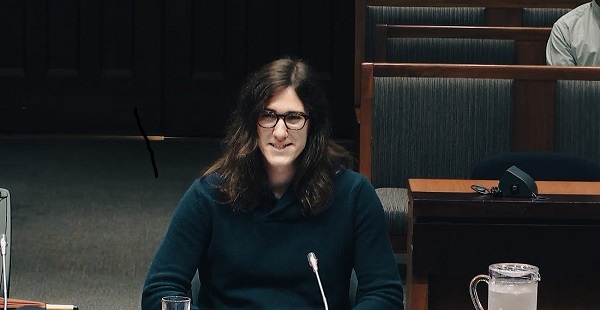
Lawmakers confront organizer Tomas Szuchewycz for flooding ridings with placeholder candidates, targeting Pierre Poilievre’s seat, and wasting public resources.
Szuchewycz’s most notorious move came in Carleton — the riding of Conservative Leader Pierre Poilievre, where the ballot swelled to 91 names, stretching nearly a metre and forcing Elections Canada to redesign how it printed and handled the vote. The LBC framed the stunt as a protest against Canada’s first-past-the-post electoral system. But to most voters, it looked nothing like a principled reform campaign. What they saw was an effort aimed squarely at Poilievre, meant to bury his name among a wall of nobodies and turn the vote into a farce.
Elections Canada had to scramble to manage the chaos: printing extra‑long ballots, re‑training workers, and creating a last‑minute write‑in workaround in Battle River–Crowfoot to keep ballots usable. Seniors and disabled voters complained about the physical size and complexity of the ballot; poll workers faced new logistical headaches; public money was wasted.
At Tuesday’s hearing, Szuchewycz showed no contrition and offered no practical alternative to the system he had tried to upend. Instead, he accused MPs of having a “conflict of interest” in writing election law and demanded that power be handed to an undefined “permanent, non‑partisan body” — without explaining who would select it, how it would operate, or how it would be accountable to Canadians.
The LBC, whose actions led to metre-long ballots in ridings like Carleton (91 candidates) and Battle River–Crowfoot (86), claims to oppose Canada’s first-past-the-post system. But when asked how his proposed independent reform body would be formed, selected, or held accountable, Szuchewycz had no answers.
Conservative MP Michael Cooper led the charge, accusing Szuchewycz of overseeing a signature-harvesting scheme that involved electors signing blank nomination forms—potentially in violation of the Canada Elections Act. He tabled a January 2024 tweet and an August 2024 YouTube video showing organizers gathering signatures under the claim that candidate names would be “filled in later.”
Szuchewycz denied the accusation, claiming nomination papers had either candidate names or the phrase “all candidates” filled in. But when he tried to discredit Cooper’s evidence by calling it “AI-generated,” the committee chair issued a warning for casting doubt on the authenticity of a Member’s documents without basis. The comment was withdrawn under pressure.
Still, Cooper was unsatisfied, warning Szuchewycz that misleading Parliament could amount to contempt.
Other witnesses—experts and former elected officials—were equally critical of the LBC’s tactics. Dr. Lori Turnbull, a professor at Dalhousie University, called the stunt “undesirable” and a “waste of resources,” though she praised Elections Canada for adapting quickly by allowing a write-in workaround in Battle River–Crowfoot to avoid printing a literal wall of names.
Professor Peter Loewen of Cornell University added that the LBC’s ballot-stuffing “violates the spirit” of competitive democracy and burdens front-line elections staff with unnecessary logistical chaos. He warned that a third-party group acting like a political party without oversight was a loophole that needed closing.
Meanwhile, former Liberal MP Louis-Philippe Sauvé described the real-world toll of the stunt: longer lineups, stressed poll workers, and accessibility hurdles for elderly and visually impaired voters.
In stark contrast to these grounded critiques, Szuchewycz’s testimony revolved around vague accusations of “conflict of interest” by MPs and a call to remove Parliament from electoral reform altogether. No constitutional roadmap. No governance model. No practical enforcement mechanism.
At the end of the day, what Tomas Szuchewycz has done isn’t just a stunt, it’s an insult. He claims Canadians “know what he’s protesting,” but let’s be honest: most voters had no clue this was about electoral reform. What they saw was a campaign to flood ballots with nonsense names in key ridings, especially against the Leader of the Opposition, and create chaos for chaos’s sake.
The takeaway wasn’t a conversation about democracy. It was a spectacle, and one that mocked the very voters he pretends to represent. Lets be clear, This wasn’t activism, it was ego masquerading as principle. And it reeked of entitlement.
Tomas Szuchewycz is the embodiment of unchecked privilege: a man who hijacked our electoral process, wasted taxpayer dollars, and offered nothing in return but smug contempt for the very democracy that gave him the space to pull his stunt.
He claims Canadians understood his message. They didn’t. Most people saw a confusing mess, an attack on the Opposition Leader, and a joke made at the expense of voters, poll workers, and the electoral system itself.
So yes — reform is coming. And it can’t come soon enough.
Parliament must not just close the loopholes it should make sure that when someone deliberately sabotages the integrity of an election, they are held accountable, including being forced to repay the public for the cost of their chaos.
Because in a democracy, you have the right to protest.
But not the right to turn an election into a farce on the public’s dime.
Subscribe to The Opposition with Dan Knight
Invite your friends and earn rewards
2025 Federal Election
Post election report indicates Canadian elections are becoming harder to secure
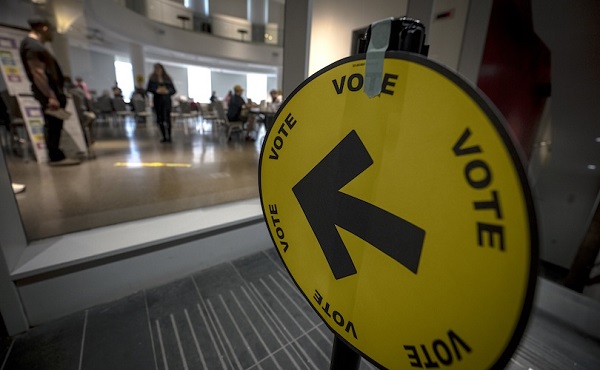
Chief Electoral Officer Stéphane Perrault highlights strong participation and secure voting, but admits minority politics, rising costs, and administrative pressures are testing the system’s limits.
Monday in Ottawa, Stéphane Perrault, Canada’s Chief Electoral Officer, delivered a long press conference on April’s federal election. It was supposed to be a victory lap, record turnout, record early voting, a secure process. But if you listened closely, you heard something else: an admission that Canada’s election machinery is faltering, stretched thin by a system politicians refuse to fix.
Perrault touted the highest turnout in 30 years, 69 percent of eligible voters, nearly 20 million Canadians. Almost half of those ballots were cast before election day, a dramatic shift in how citizens take part in democracy.
“Twenty years ago, less than 7% voted early. This year, nearly half did,” Perrault told reporters. “Our system may have reached its limit.”
That’s the core problem. The system was built for one decisive day, not weeks of advance voting spread across campuses, long-term care homes, mail-in ballots, and local Elections Canada offices. It’s no longer a single event; it’s an extended process that stretches the capacity of staff, polling locations, and administration.
Perrault admitted bluntly that the 36-day writ period, the time between when an election is called and when the vote happens, may no longer be workable. “If we don’t have a fixed date election, the current time frame does not allow for the kind of service preparations that is required,” he said.
And this is where politics collides with logistics. Canada is once again under a minority government, which means an election can be triggered at almost any moment. A non-confidence vote in the House of Commons, where opposition parties withdraw support from the government, can bring down Parliament in an instant. That’s not a flaw in the system; it’s how parliamentary democracy works. But it leaves Elections Canada on permanent standby, forced to prepare for a snap election without knowing when the writ will drop.
The result? Sixty percent of voter information cards were mailed late this year because Elections Canada couldn’t finalize leases for polling stations on time. Imagine that, more than half the country got their voting information delayed because the system is clogged. And that’s when everything is supposedly working.
The April election cost an estimated $570 million, almost identical to 2021 in today’s dollars. But here’s the kicker: Elections Canada also spent $203 million just to stay ready during three years of minority Parliament. That’s not democracy on the cheap. That’s bureaucracy on retainer.
Perrault admitted as much: “We had a much longer readiness period. That’s the reality of minority governments.”
No Foreign Interference… But Plenty of ‘Misinformation’
Canada’s top election official wanted to make something perfectly clear: “There were no acts of foreign interference targeting the administration of the electoral process.” That’s the line. And it’s a good one… reassuring, simple, the kind of phrase meant to make headlines and calm nerves.
But listen closely to the wording. He didn’t say there was no interference at all. He said none of it targeted the administration of the vote. Which raises the obvious question: what interference did occur, and who was behind it?
Perrault admitted there was “more volume than ever” of misinformation circulating during the 2025 election. He listed the greatest hits: rumors that Elections Canada gives voters pencils so ballots can be erased, or claims that non-citizens were voting. These are hardly new — they’ve appeared in the U.S. and in Europe too. The difference, he said, is scale. In 2025, Canadians saw those narratives across more channels, more platforms, more communities than ever before.
This is where things get interesting. Because the way Perrault framed it wasn’t that a rogue actor or a foreign intelligence service was pushing disinformation. He was blunt: this was a domestic problem as much as anything else. In his words, “whether foreign or not,” manipulation of information poses the “single biggest risk to our democracy.”
Perrault insists the real danger isn’t foreign hackers or ballot-stuffing but Canadians themselves, ordinary people raising questions online. “Information manipulation, whether foreign or not, poses the single biggest risk to our democracy,” he said.
Well, maybe he should look in the mirror. If Canadians are skeptical of the system, maybe it’s because the people running it haven’t done enough to earn their trust. It took years for Ottawa to even acknowledge the obvious , that foreign actors were meddling in our politics long before this election. Endless commissions and closed-door reports later, we’re told to stop asking questions and accept that everything is secure.
Meanwhile, what gets fast-tracked? Not a comprehensive fix to protect our democracy, but a criminal investigation into a journalist. Keean Bexte, co-founder of JUNO News, is facing prosecution under Section 91(1) of the Canada Elections Act for his reporting on allegations against Liberal candidate Thomas Keeper. The maximum penalty? A $50,000 fine and up to five years in prison. His reporting, incidentally, was sourced, corroborated, and so credible that the Liberal Party quietly dropped Keeper from its candidate list.
If people doubt the system, it isn’t because they’re gullible or “misinformed.” It’s because the government has treated transparency as an afterthought and accountability as an inconvenience. And Perrault knows it. Canadians aren’t children to be scolded for asking questions, they’re citizens who expect straight answers.
But instead of fixing the cracks in the system, Ottawa points the finger at the public. Instead of rebuilding trust, they prosecute journalists.
You don’t restore faith in democracy by threatening reporters with five years in prison. You do it by showing, quickly and openly, that elections are beyond reproach. Until then, spare us the lectures about “misinformation.” Canadians can see exactly where the problem lies, and it isn’t with them.
The Takeaway
Of course, they’re patting themselves on the back. Record turnout, no servers hacked, the trains ran mostly on time. Fine. But what they don’t want to admit is that the system barely held together. It was propped up by 230,000 temporary workers, leases signed at the last minute, and hundreds of millions spent just to keep the lights on. That’s not stability. That’s triage.
And then there’s the lecturing tone. Perrault tells us the real threat isn’t incompetence in Ottawa, it’s you, Canadians “sharing misinformation.” Excuse me? Canadians asking questions about their elections aren’t a threat to democracy, they are democracy. If the government can’t handle people poking holes in its story, maybe the problem isn’t the questions, maybe it’s the answers.
So yes, on paper, the 2025 election looked like a triumph. But listen closely and you hear the sound of a system cracking under pressure, led by officials more interested in controlling the narrative than earning your trust. And when the people running your elections think the real danger is the voters themselves? That’s when you know the elastic isn’t just stretched. It’s about to snap.
Subscribe to The Opposition with Dan Knight .
For the full experience, upgrade your subscription.
-
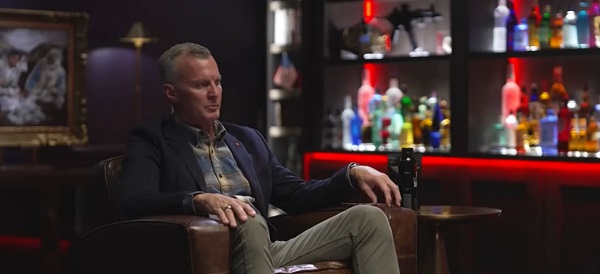
 Daily Caller2 days ago
Daily Caller2 days ago‘Holy Sh*t!’: Podcaster Aghast As Charlie Kirk’s Security Leader Reads Texts He Allegedly Sent University Police
-

 Crime11 hours ago
Crime11 hours ago‘Modern-Day Escobar’: U.S. Says Former Canadian Olympian Ran Cocaine Pipeline with Cartel Protection and a Corrupt Toronto Lawyer
-

 Great Reset2 days ago
Great Reset2 days agoCanadian government forcing doctors to promote euthanasia to patients: report
-
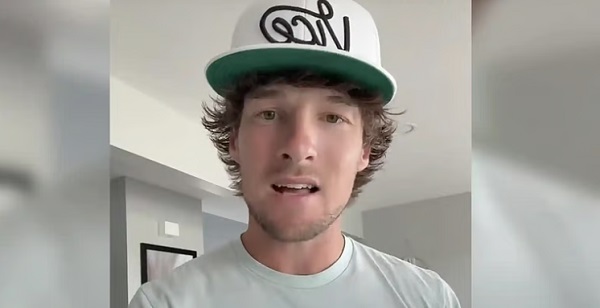
 Alberta2 days ago
Alberta2 days agoSylvan Lake football coach fired for opposing transgender ideology elected to town council
-

 Health2 days ago
Health2 days agoNEW STUDY: Infant Vaccine “Intensity” Strongly Predicts Autism Rates Worldwide
-
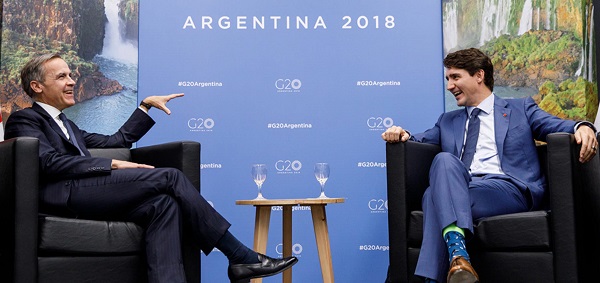
 Carbon Tax2 days ago
Carbon Tax2 days agoCarney fails to undo Trudeau’s devastating energy policies
-
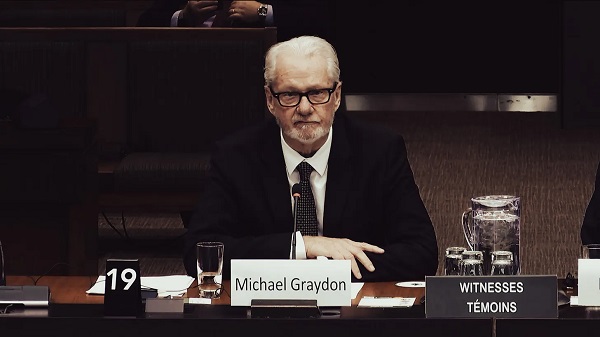
 Business1 day ago
Business1 day agoNearly One-Quarter of Consumer-Goods Firms Preparing to Exit Canada, Industry CEO Warns Parliament
-
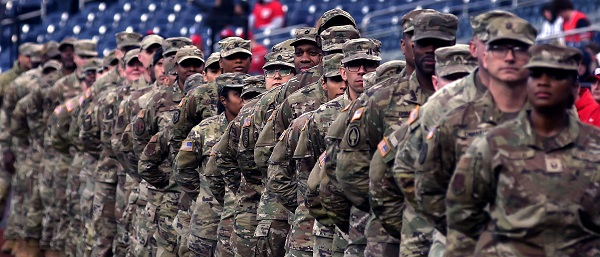
 Daily Caller23 hours ago
Daily Caller23 hours agoDemocrats Explicitly Tell Spy Agencies, Military To Disobey Trump










